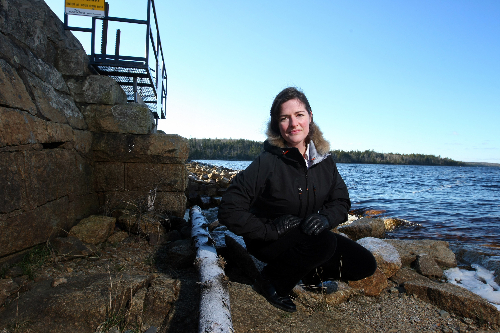Dalhousie University’s Hydrology Research Group has launched the first Nova Scotia Watershed Atlas and geo-database. Created in collaboration with Nova Scotia Environment (NSE), the atlas provides the first high-level assessment of the health and stressors of watersheds in Nova Scotia.
The atlas and geo-database provide research on watersheds across the province, in an easy-to-understand package. It makes the information usable to government as a management tool, and the public as an education tool.
Many small coastal watersheds are currently facing high levels of stress, and require more detailed investigation. While these areas can often be overlooked in traditional inventories, much of Nova Scotia’s population lives in these areas. As such, the new atlas was created to highlight threats to water quality and supply in watersheds.
“We have developed a model that identifies the threats to our watersheds, and which watersheds have the most stresses,” explains Shannon Sterling, director of the Dalhousie Hydrology Group, Dalhousie University. “We examine stresses related to water quality, stream habitat, flow change, and surface erosion. The watersheds that pop up as being among the most stressed are those containing highly developed coastal communities, such as Cornwallis, Cunard watersheds around Wolfville, the Sackville watershed near Halifax, and the Sydney watershed, near Sydney.”
Nova Scotia is unique in that it’s composed of many smaller watersheds that flow directly into the ocean, as opposed to being dominated by large watersheds, as is the case in Alberta, New Brunswick, Saskatchewan, Manitoba and British Columbia.
It also means that high-level watershed planning is a priority in Nova Scotia.
High-level assessments are useful for evaluating threats posed by non-point-source stressors, such as urban runoff pollution, released over a wide area because their impacts are not easily monitored or detected.
“This project has benefited Nova Scotian’s by providing information on water quality and quantity for our watersheds, developing a model that can be used to determine watershed health, and providing a map atlas and spatial database that enables the sharing of this information with water resource managers, academics, and all Nova Scotian’s across the province,” said Kevin Garroway, lead scientist, Nova Scotia Environment, Government of Nova Scotia.
Another part of the Nova Scotia Watershed Assessment Program is the geo-database that assembles provincial scale watershed information.
The atlas uses the information from the geo-database to compare threatened watersheds with those where protective measures are in place. The watersheds with the highest threat and with the least amount of protective measures are highlighted as high priority for more detailed investigation.
The map atlas and spatial database culminates three and a half years of gathering, checking and analyzing spatial information on Nova Scotia’s watersheds.


